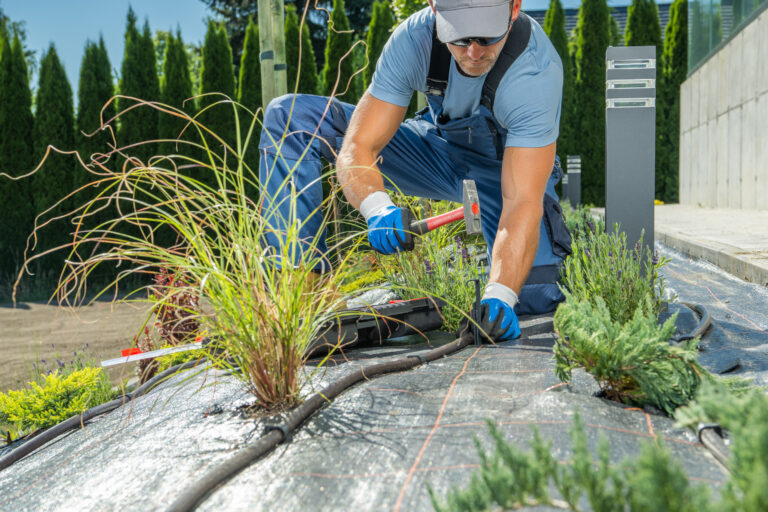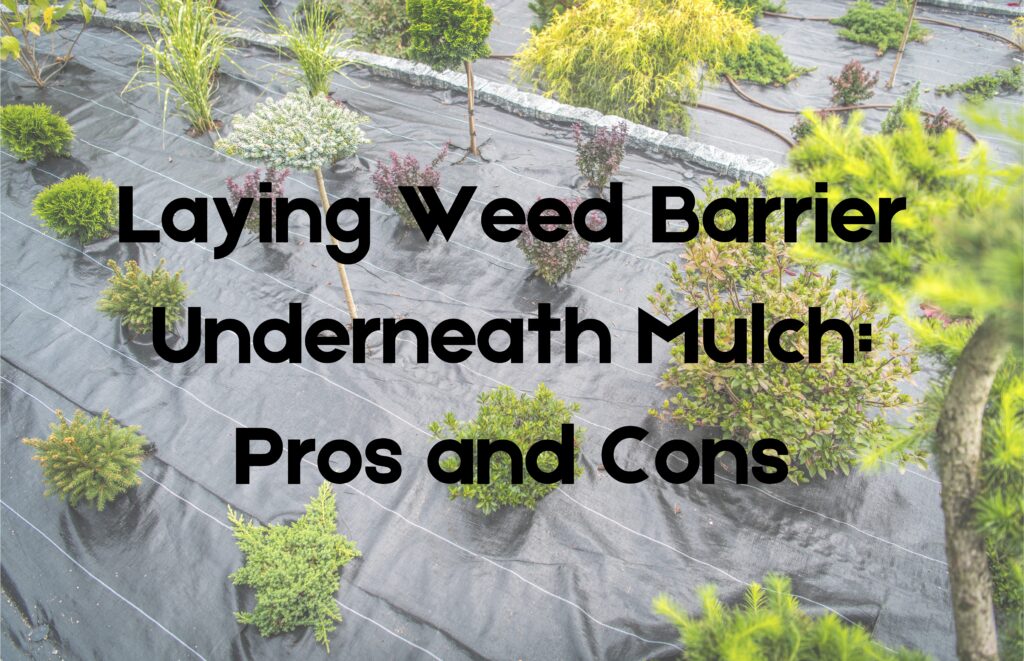Table of Contents
1) Types of Weed Barriers
1) Fabric Barriers: Made from woven or non-woven geotextile fabrics, these allow for better air and water permeability compared to plastic. They are more durable and suitable for long-term use in perennial beds.
2) Plastic Sheeting: Typically used for vegetable gardens where it’s applied seasonally. Plastic is effective at eliminating light, but it can lead to water pooling and needs perforation for adequate water passage.
3) Biodegradable Barriers: These are environmentally friendly options like paper or cardboard. They decompose over time, adding organic matter to the soil but need to be replaced annually.
2) Pros
1) Weed Suppression: The primary advantage is the significant reduction of weed growth. Weed barriers block sunlight, which weeds need for photosynthesis, thereby inhibiting their ability to grow.
2) Moisture Retention: These barriers can help soil retain moisture by reducing evaporation. This can be especially beneficial during hot and dry periods, keeping the roots of desirable plants hydrated.
3) Cleanliness and Order: Using a weed barrier can keep mulch cleaner and prevent it from mixing with the underlying soil. This can be particularly useful for aesthetic purposes in garden beds.
4) Reduced Soil Erosion: Barriers can help prevent soil erosion by buffering the soil from direct impact of raindrops and wind.

3) Cons
1) Soil Quality Deterioration: Over time, the barrier can prevent organic matter, such as decomposing mulch, from integrating into the soil below. This can result in poorer soil quality due to reduced aeration and decreased microbial activity.
2) Impeded Water Penetration: Some weed barriers, especially impermeable fabrics, can prevent water from seeping effectively into the soil, potentially leading to water runoff and less water available to plant roots.
3) Durability Issues: Depending on the material, weed barriers can degrade over time. Plastic barriers can tear and fray, and even high-quality landscape fabrics might break down, requiring replacement.
4) Restriction of Beneficial Organisms: A barrier can restrict the movement of beneficial insects and organisms like earthworms, which are crucial for maintaining healthy soil structure and fertility.
4) Water Dynamics
- Hydration Levels: Proper selection and installation of the barrier are crucial to ensure that water reaches the plant roots effectively. Overlapping fabric barriers can help create a more seamless protection that still allows water and air to pass through.
- Drainage and Runoff: In areas prone to heavy rains, barriers must be installed with careful consideration of drainage. Improper installation can lead to runoff and erosion, counteracting the benefits of moisture retention.

5) Enhanced Soil Interaction
Weed barriers affect soil interaction in significant ways:
- Nutrient Access: While barriers prevent weeds, they can also block nutrients from organic mulches from reaching the soil. This can be mitigated somewhat by using nutrient-rich organic mulches above the barrier.
- Microbial Activity: The soil’s microbial ecosystem can be stifled by reduced organic matter integration and aeration. Fabric barriers are preferable over plastic for promoting a healthier soil environment.
6) Considerations
- Material Choice: Options include plastic, fabric, and biodegradable papers. Each has different impacts on the environment and garden ecology.
- Installation: Proper installation is crucial to maximize the benefits and minimize the drawbacks. It’s important to overlap the sheets properly and secure them to prevent gaps where weeds might penetrate.
- Mulch Type: The choice of mulch used over the barrier also matters. Organic mulches like wood chips can add nutrients to the soil as they decompose, but this benefit is reduced if a non-porous barrier is used. If you’d like to explore more about mulching installation, read our blog 7 Tips for Successful Mulch Installation.
- Garden Type and Needs: The choice of barrier often depends on the type of garden and the specific plants involved. Vegetable gardens might benefit from plastic due to its effectiveness in weed suppression for short periods, whereas perennial landscapes might do better with fabric barriers that last longer and support healthier soil.
- Environmental Impact: Consider the environmental footprint of different materials. Biodegradable options are preferable for reducing waste, whereas synthetic fabrics might be used in areas where long-term durability is necessary.
- Maintenance: Over time, any barrier may surface through the mulch, especially in high traffic areas or under conditions of soil shifting. Regular checks and maintenance are required to ensure the barriers remain effective and covered.



